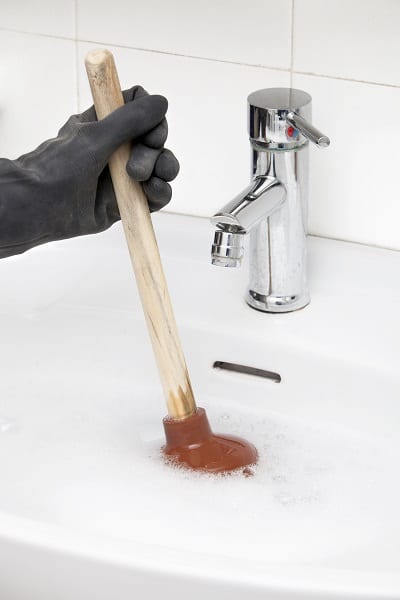Learning Pipe Winterization: Five Key Hacks to Use in Frigid Temperatures
Learning Pipe Winterization: Five Key Hacks to Use in Frigid Temperatures
Blog Article
We've uncovered this post about How to stop pipes from freezing during the winter down the page on the net and felt it made sense to relate it with you over here.

All house owners who live in warm environments must do their best to winterize their pipelines. Failure to do so can mean disaster like frozen, fractured, or ruptured pipes.
Switch on the Faucets
When the temperature decreases as well as it appears as if the frigid temperature will last, it will certainly aid to activate your water both inside your home and also outdoors. This will certainly keep the water moving via your plumbing systems. Furthermore, the activity will certainly decrease the cold process. Significantly, there's no requirement to turn it on full blast. You'll wind up wasting gallons of water this way. Rather, go for regarding 5 declines per min.
Open Cupboard Doors Hiding Plumbing
When it's chilly outside, it would certainly be useful to open closet doors that are masking your pipes. They can be someplace in your cooking area or shower room. This will enable the cozy air from your heating unit to circulate there. Therefore, you protect against these exposed pipes from cold. Doing this small trick can keep your pipelines cozy and limit the possibly unsafe end results of freezing temperatures.
Take Some Time to Cover Exposed Piping
One awesome as well as easy hack to warm up icy pipes is to cover them with cozy towels. You can also make use of pre-soaked towels in hot water, just don't forget to put on safety handwear covers to secure your hands from the warmth.
Try a Hair Dryer or Warm Weapon
When your pipes are practically freezing, your trusty hair dryer or warm gun is a godsend. Bowling warm air directly into them may aid if the hot towels do not aid dislodge any kind of resolving ice in your pipelines. Do not use various other things that create direct fires like a strike lantern. This can lead to a larger disaster that you can not manage. You may end up destructive your pipelines while attempting to melt the ice. And over time, you may also wind up burning your home. So be cautious!
When Pipelines are Frozen, close Off Water
Shut off the primary water valve quickly if you observe that your pipes are totally frozen or nearly nearing that stage. You will usually locate this in your cellar or utility room near the heater or the front wall surface closest to the street. Transform it off immediately to stop further damages.
With more water, even more ice will pile up, which will at some point lead to burst pipelines. If you are not sure concerning the state of your pipelines this winter season, it is best to call a specialist plumber for an inspection.
All home owners that live in temperate climates have to do their finest to winterize their pipelines. Failing to do so can lead to calamity like icy, split, or burst pipes. If the hot towels do not assist remove any type of clearing up ice in your pipes, bowling hot air straight into them may assist. Turn off the major water valve promptly if you observe that your pipes are completely icy or practically nearing that stage. With more water, even more ice will certainly pile up, which will at some point lead to break pipelines.
PREVENT YOUR PIPES FROM FREEZING THIS WINTER
A Leading Cause of Property Damage
When the weather is taking a deep nose dive into the cold dreary days, the risk of your pipes freezing and potentially bursting skyrockets. Unfortunately, during these cold dreary months, burst pipes are the most common denominator for property damage. The pipes that are most at the risk are those that are in areas where it is most cold in your home. For instance, pipes located in interior places such as basements, attics, and your garage. Unfortunately, that doesn’t mean that the pipes running through your cabinets or exterior walls can’t freeze. Good news, however, is that you can do things to help prevent pipes from freezing.
How to Prevent Pipes From Freezing
Once the temperature starts to drop during the winter, you should be taking the proper measures needed to ensure that your pipes stay warm and that there is circulation of water through them. Some steps that experts may recommend could go against your better judgement when it comes to saving water and heat. However, it would go without saying that when expenses are compared, damaged pipes could put a bigger dent in your wallet than a water bill.
What Can I Do?
Keep your garage door closed. This is very important, especially if you have water supply lines running through your garage. Open your kitchen and bathroom cabinets to allow warm air to circulate through them. Allow air circulation throughout your home. Keeping the interior doors open will once again allow the warm air to circulate inside your home. Ensure your thermostat is running the same temperature throughout the night and day. If you plan to be away from home during the cold months, set your temperature no lower than 55° F. This should provide enough heat to keep the pipes warm and prevent any remaining water inside the pipes from freezing. For more of a long-term solution, add insulation to attics, basement, and other crawl spaces around your home. By allowing your faucet to drip, it will alleviate pressure in the system. This is important because the pressure that is created between the blockage and the faucet can potentially cause the pipes to burst. Allowing the faucet to drip will prevent the pressure from building up, therefore keeping the pipes from bursting. Seal any cracks, openings, and crawl spaces around your home to prevent cold air from coming inside. This keeps your pipes-not to mention your home-warmer and less susceptible to issues caused by freezing temperatures. For the pipes in your home that are easily accessible, applying electrical tape to them might prevent them from freezing over. This is a quick fix, as you can apply the tape directly to the pipe. There are two options for heating tapes. One turns on and off by itself when it senses heat is needed. The other type of heating tape needs to be applied when heat is needed and removed when not necessary. If you have exposed pipes in your home, you can check this website to take a look at a few options that would be available at a shop near you.

Do you enjoy reading up on Winterizing Your Pipes? Put feedback below. We will be delighted to hear your thoughts about this blog entry. Hoping that you come back again later on. So long as you liked our blog posting please make sure you remember to pass it around. Kudos for your time. Please come visit our site back soon.
Schedule Now Report this page